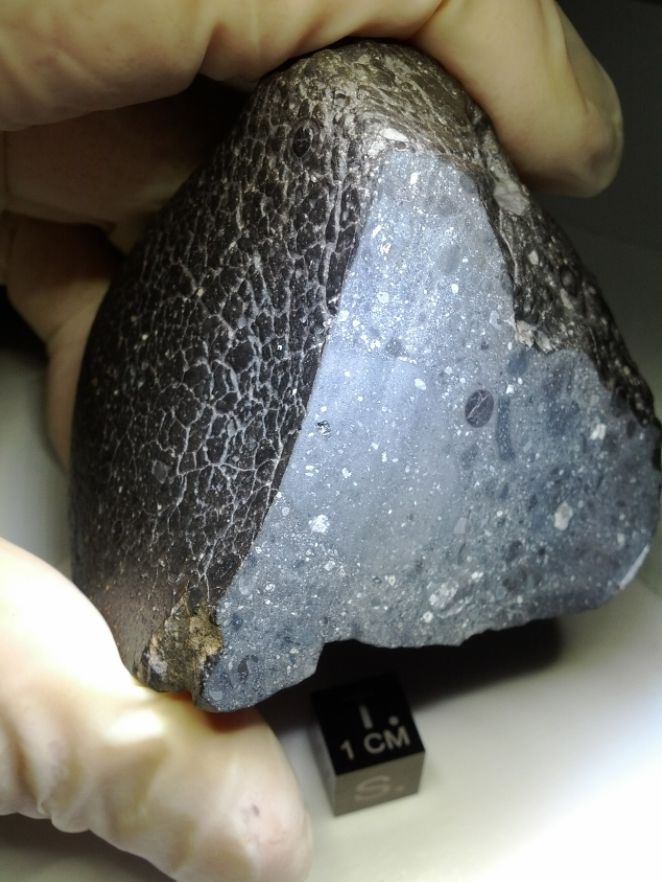Researchers from Curtin University have discovered the first evidence of high-intensity damage produced by an asteroid impact on a Martian meteorite, results that could help scientists figure out when circumstances on Mars were favorable for life.
The study, which was published in the journal Science Advances, looked at zircon grains in the Martian meteorite NWA 7034. The meteorite, often known as ‘Black Beauty,’ is a rare piece of the Martian surface. The original 320-gram rock was discovered in northern Africa in 2013.
Morgan Cox, the lead author, described the meteorite as a collection of fragmented rock pieces and minerals, predominantly basalt, that cemented and formed a rock over time. Inside the meteorite, a zircon maintains signs of damage that occurs only after major meteorite impacts.
“This grain is truly a one-off gift from the Red Planet. High-pressure shock deformation has not previously been found in any minerals from Black Beauty. This discovery of shock damage in a 4.45 billion-year-old Martian zircon provides new evidence of dynamic processes that affected the surface of early Mars,” says the author.

“The type of shock damage in the Martian zircon involves ‘twinning’, and has been reported from all of the biggest impact sites on Earth, including the one in Mexico that killed off the dinosaurs, as well as the Moon, but not previously from Mars.”
The presence of zircon grains in the Black Beauty meteorite, according to co-author Dr Aaron Cavosie of Curtin’s SSTC, revealed physical evidence of significant impacts on early Mars and had ramifications for the young planet’s habitability.
“Prior studies of zircon in Martian meteorites proposed that conditions suitable for life may have existed by 4.2 billion years ago based on the absence of definitive shock damage” Dr. Cavosie adds.
“Mars remained subject to impact bombardment after this time, on the scale known to cause mass extinctions on Earth. The zircon we describe provides evidence of such impacts, and highlights the possibility that the habitability window may have occurred later than previously thought, perhaps coinciding with evidence for liquid water on Mars by 3.9 to 3.7 billion years ago.”
Source: 10.1126/sciadv.abl7497
Image Credit: Getty
You were reading: Black Beauty: “This grain is truly a one-off gift from the Red Planet”